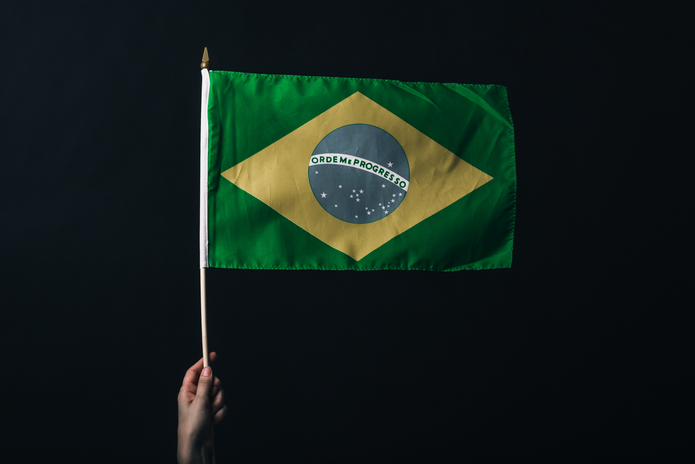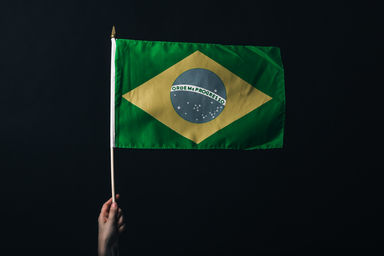Brazilian women’s artistic gymnastics is going through a moment of glory, driven by exceptional talent and gaining more recognition on the international sports scene. The brilliance at the Tokyo Olympics in 2021, with Rebeca Andrade‘s silver and gold medals, turned the eyes of the entire country and the world to the talent, dedication, and resilience of Brazilian athletes in the sport. Since then, the results have been increasingly historic.
The team, composed of Rebeca Andrade, Flavia Saraiva, Jade Barbosa, Lorrane Oliveira, and Julia Soares, arrived in Paris 2024 with high expectations after a celebrated runner-up finish at the 2023 World Artistic Gymnastics Championships in Antwerp. There, they celebrete their first-ever team medal for Brazil’s artistic gymnastics at a World Championship.
With great strength and determination, in a thrilling competition marked by fierce performances and closely contested results, the Brazilian women’s artistic gymnastics team won the first-ever team medal for the country in the history of Olympics, crowning years of hard work, dedication, and perseverance. A bronze that, for Brazilians, felt like gold and victory!
With every twist, acrobatic move, and perfect landing, these athletes invite us to dream bigger, to believe in our potential, and to pursue our goals with passion and dedication. But how can we follow the progress of these incredible gymnasts during the years when there are no Olympic Games? Here, I’ll show you how!
From The BEGINNING
The history of artistic gymnastics in Brazil is a narrative of continuity, where each generation of gymnasts built upon the foundations laid by the previous ones. From the early steps of Luisa Parente, through the golden era with Daiane dos Santos, Daniele Hypólito, and Jade Barbosa, to the rise of Rebeca Andrade, there is a common thread that unites these athletes: the relentless pursuit of excellence.
Artistic gymnastics have been practiced in Brazil since the early 20th century, mainly introduced by European immigrants. However, the key milestone for the organization of artistic gymnastics in the country was the founding of the Brazilian Gymnastics Confederation (CBG) in 1951. This was crucial for structuring the sport, enabling the organization of national competitions and encouraging the technical development of athletes.
It was during the 1980s that artistic gymnastics in Brazil started to gain more strength. With the development of training programs and the increase in national competitions, the sport began to establish itself in the country. Luisa Parente was one of the first Brazilian gymnasts to gain international recognition, representing Brazil in two editions of the Olympic Games, in 1988 and in 1992.
Following, the Golden Era of Brazil’s artistic gymnastics began in the 2000s, with pioneers like Daniele Hypólito, who was known for her consistency and longevity in her career. She started competing internationally in her teenage years and stood out as the first Brazilian gymnast to shine in international competitions. However, it was Daiane dos Santos who elevated the sport to a new level, winning Brazil’s first gold medal at a World Championship in 2003.
The “Ballerina from Guarulhos”, with her contagious smile and undeniable talent, captivated the world and opened doors for generations of Brazilian gymnasts. Her memorable floor routine to the tune of “Brasileirinho” became a symbol of overcoming obstacles and joy. As well as her “Dos Santos” move, which became an icon in the sport. Her legacy not only placed the country on the world gymnastics map but also served as an inspiration for the current national team members.
In recent years, Rebeca Andrade has emerged as one of the sport’s greatest promises in the country. After facing several severe injuries throughout her career, Rebeca reached her peak at the Tokyo 2020 Olympic Games.
Now, with the four medals won at the Paris 2024 Olympics, she became Brazil’s most decorated female Olympian, with a total of six medals in her modality, and the first Brazilian gymnast to win multiple medals in a single edition of the Games.
This shows that this new generation of gymnasts has great potential to continue competing at a high level on the global stage and serves as an inspiration for young athletes starting in the sport.
Besides the Olympics
Although the Olympics are the time of greatest visibility for artistic gymnastics, there are several competitions throughout the Olympic cycle that allow fans to follow the progress of gymnasts around the world. For those who were captivated by the Brazilian team and have read this far, here are the championships where Brazilian athletes compete during the year:
1. Brazilian Championship Loterias Caixa of Women’s Artistic Gymnastics
This is the main national championship, where athletes compete for the title of Brazilian champion. This event takes place annually and is an excellent opportunity to see the performances of our Olympic stars and get to know our future prospects better.
Additionally, regional and state tournaments also offer valuable opportunities to follow the development of gymnasts and discover new talents in the sport.
2. Pan-American Women’s Artistic Gymnastics Championship and Games
The continental event is another crucial competition where all delegations test their new routines, difficulties, and executions according to the International Gymnastics Federation (FIG) regulations.
3. World Championships
The World Championships are the most important events outside the Olympics. They take place annually, except in Olympic years, and determine many of the spots for teams and individual gymnasts in the Olympic Games.
The follwing editions, such as in 2025 at Jakarta, 2026 at Rotterdam, and 2027 at Chengdu, will be key moments to see Brazilian gymnasts competing against the best in the world during the next cycle.
4. World Cups
Held throughout the year, the World Cups are a series of stages conducted in different countries and focused on individual apparatus, meaning there is no all-around or team competition. Brazilian gymnasts participate in these events and can earn points in the world rankings.
5. South American Women’s Artistic Gymnastics Championship
This is an important regional tournament where Brazil traditionally excels. Typically, the “elite” gymnasts of the team are not called up for this competition, but it is nonetheless essential for following the development of other rising Brazilian gymnasts on an international stage.
The journey of these gymnasts is inspiring, and following every leap, twist, and achievement is a way to celebrate the talent and dedication of these incredible athletes, even outside the Olympic spotlight. Don’t miss the chance to cheer them on at every stage of their careers!
To not miss any details, I reccommend you to follow the Brazilian gymnasts on social media, where they frequently post updates about their training, competitions, and personal lives.
It’s also good to keep an eye on the official websites of the Brazilian Gymnastics Confederation (CBG), the International Gymnastics Federation (FIG), and the main sports channels that broadcast many of these events live, making it possible to follow the competitions from anywhere.
__________
The article above was edited by Fernanda Miki Tsukase.
Liked this type of content? Check Her Campus Cásper Líbero home page for more!


